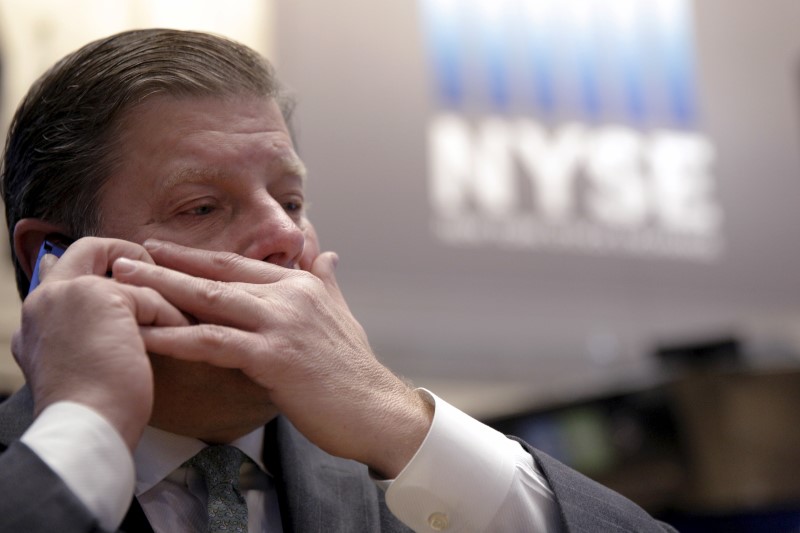By Yasin Ebrahim
Investing.com -- The Dow closed lower Wednesday, but swung wildly between gains and losses as the Federal Reserve moved to a slower pace of rate hikes, but also signaled rates to peak at higher levels than previously expected.
The Dow Jones Industrial Average fell 0.42%, or 142 points, the Nasdaq Composite slipped 0.76%, and the S&P 500 fell 0.61%.
The Federal Reserve raised interest rates by 0.5% on Wednesday, and lifted its forecast for rates to peak at 5.1% and remain at that level through 2023
That was above the 4.6% forecast in September, and poured cold water somewhat on Wall Street expectations for a rate cut in the second half of next year.
The Fed also continued to project a soft landing for the economy, though there aren’t many who share their optimism.
“Once again, it is hard to believe that the Fed is capable of pulling off such a delicate landing of the economy onto a gradual glidepath towards somewhat lower growth, only mildly higher unemployment, and on-target inflation,” Jefferies said in a note.
Treasury yields delivered a lackluster move on the news, with the 2-year, which is sensitive to the Fed’s rate hikes, retreating from its session high.
Financials, mostly banks, were the worst hit as the Fed’s hawkish stance renewed fears about the central bank overtightening monetary policy and pushing the economy into recession.
PNC Financial Services Group Inc (NYSE:PNC), Synchrony Financial (NYSE:SYF), and Signature Bank (NASDAQ:SBNY) were down about 3%
Technology stocks fell 1% as big tech traded mixed, with Apple (NASDAQ:AAPL) and Alphabet (NASDAQ:GOOGL) ending the day lower, while Microsoft Corporation (NASDAQ:MSFT) and Meta Platforms Inc (NASDAQ:META) were in the green.
Health care was the only sector to end the day in the green, led by another surge in Moderna (NASDAQ:MRNA) as investors continued to cheer the drugmaker’s positive news on its skin cancer drug from a day earlier.
In other news, Delta Air Lines (NYSE:DAL) cut the bulk of its gains despite forecasting a jump in earnings next year, underpinned by strong travel demand that is expected to continue into 2023.
